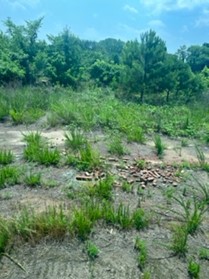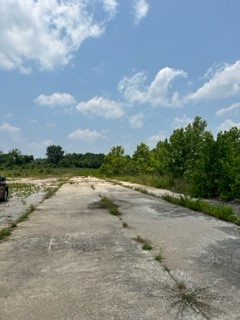

Makaela Burch is a Masters student in City and Regional Planning at Georgia Tech. She participated in SLS' Sustainable Communities Summer Internship program this summer, as an intern for both SLS and Office of the Vice President for Interdisciplinary Research.
From June 5th-11th, I was able to attend the Southeast Environmental Justice Summit in Atlanta, Georgia. The Summit was organized by Harambee House, an environmental justice organization based in Savannah, Georgia. On the first day of the Summit, I had the chance to go on an environmental justice tour of Atlanta, organized by Dr. Erica Hollman, of the West Atlanta Watershed Alliance. Along with Dr. Hollman, and other community organizers, we visited three sites across West Atlanta, and learned about the environmental justice efforts that were being tackled by local organizations. The most impactful site for me personally was the Chattahoochee Brick Company, located in west Atlanta, led by Donna Stephens of the Descendants of the Chattahoochee Brick Company Coalition. The site itself was mostly nature taking back its rightful place where a large factory once stood, but its history is what stood out to me. Founded in 1878 by Atlanta mayor, James English, the brickworks site was a source of unpaid labor for years, through the process of convict leasing. While slavery was abolished at the time, the thirteenth amendment allowed for unpaid labor to be used as a form of punishment, meaning prison labor continued to be a source of profit.
Learning about the many black men, women, and children who were imprisoned for minor offences and made to work at the brick company, coupled with the intense Georgia heat, made the stories I heard even more real to me. Although the painful past of the factory stuck with me, I found hope in the work being done to reclaim the site. Currently, the Descendants of the Chattahoochee Brick Company Coalition is in the works of turning the land into a memorial site to honor all of those who worked there with no pay and no thanks given to their labor. Furthermore, the site has recently received an EPA grant to restore the land, as much of it is contaminated with lead and heavy metals. I found this tour to be an amazing start to the Summit, as it gave me tangible examples of community engagement and environmental justice that stuck with me through the entire conference.
The views and opinions expressed in this article are solely those of the author(s) and do not necessarily reflect the views of the Georgia Institute of Technology, the University System of Georgia, or the Board of Regents of the University System of Georgia.